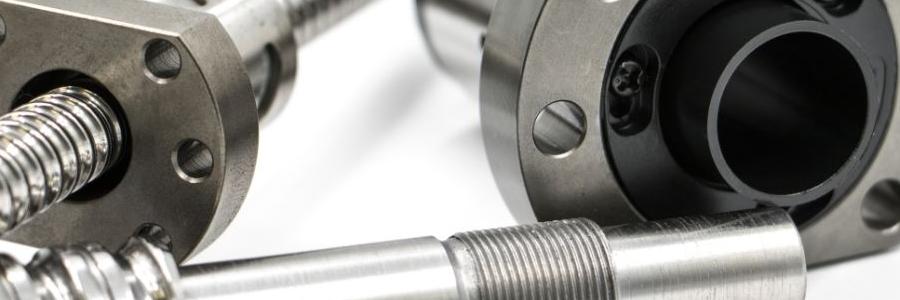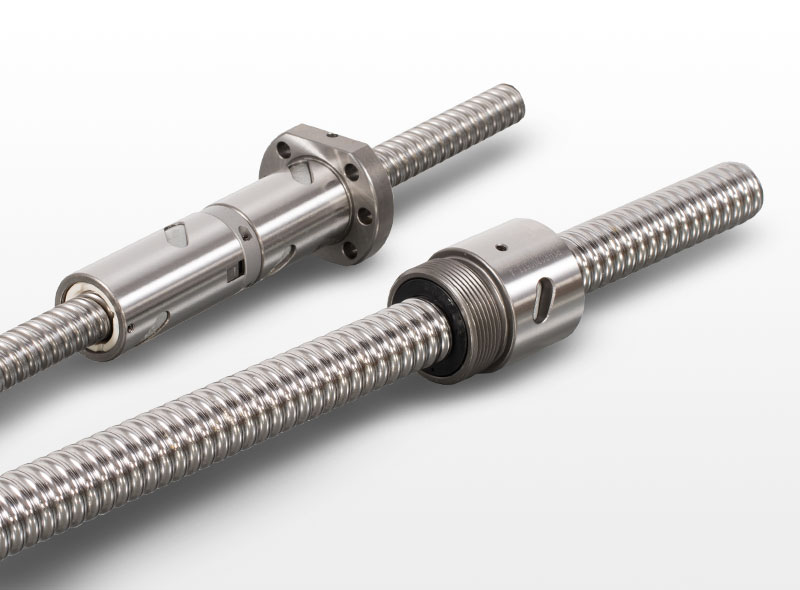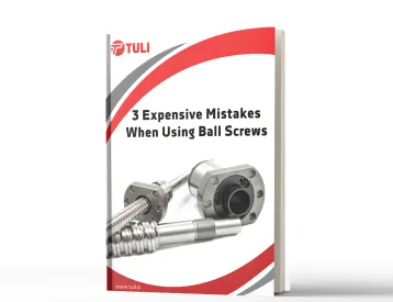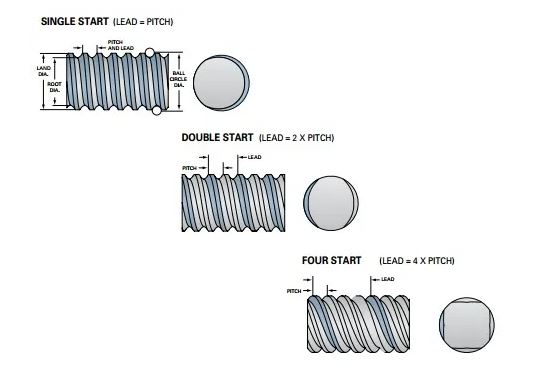Linear Motion: The Basics of Ball Screws

Ball screws are an efficient and precise mechanism used for converting rotational motion into linear motion and vice versa. Known for their accuracy and reliability, ball screws are an essential component in many modern industrial applications including industrial automation, aerospace and aviation, medical equipment, and more.
Ball Screws Functions
A ball screw assembly consists of a screw shaft with a helical groove and a nut containing recirculating ball bearings that ride along the grooves on the screw – the nut never contacts the screw directly. Instead, the ball bearings roll in the groove on the screw, reducing friction and wear and allowing for the smooth and accurate motion of the nut along the screw.
As a recirculating ball bearing, the rolling balls reach the trailing end of the nut and are redirected or guided from “pitch” contact through a return tube and thus returned to the leading end of the circuit, recirculating continuously as the nut moves along the screw.
Figure 1: Ball Screws
The efficiency of a ball screw is much higher than that of a lead screw due to the rolling contact between the screw and the nut: the required driving torque of a ball screw is only 1/3 that of a conventional lead screw.
As a result, and unlike a conventional lead screw, a ball screw can be driven in “reverse” with a linear force on the ball nut causing a rotation of the ball screw.
This feature is useful in applications where manual control or emergency operations are necessary but sometimes is not a desirable feature. Referred to as “backdriving,” in some designs a brake will be required to prevent the load on the nut from backdriving the screw.
Because a ball screw requires such a small starting torque due to the rolling motion of the bearing, it does not cause any slip which is inevitable in a conventional lead screw that uses sliding motion. Therefore, very precise micro-feeding operations are possible using a ball screw.
Types and Materials of Ball Screws
Ball screws are available in various types to satisfy various application requirements:
- Standard Rolled Ball Screws: These offer a good balance of performance and cost and are suitable for a wide range of applications.
- Miniature Ball Screws: Designed for small applications, miniature ball screws are often employed in medical instruments, compact robotics, small precision machine tools, and more.
- High Lead Ball Screws: Offering high-speed capabilities, high lead ball screw assemblies are used in applications such as industrial automation where rapid shuttling of end-of-arm tooling is desirable.
- The choice of material for ball screws is crucial for their performance and longevity. Common materials include:
- Alloy Steel: Widely used for its strength and durability, alloy steel is typically heat-treated to improve wear resistance by hardening the material either on the surface or all the way through.
- Stainless Steel: This more expensive material is specified in applications where corrosion resistance is important, such as in medical devices or food processing equipment.
- Ceramics: Used in ball bearings for higher speed applications, ceramic bearings bring advantageous properties such as low friction and long life to a design.
Design Considerations of Ball Screws
Lead and pitch: The screw pitch is the axial distance between two adjacent screw threads, and the lead is the linear distance along the axis of the screw that is covered by a complete rotation of the screw. As the lead of the screw increases, the nut travels a long distance along the screw for each screw rotation. The tradeoff is that the number of balls that can fit around the screw shaft decreases with increasing pitch, which also reduces the load capacity of the assembly.
Lead Accuracy: The difference between the actual distance traveled by the nut and the theoretical distance calculated from the lead of the screw is referred to as lead accuracy. For example, a screw with a 10 mm (cca. 0.4 inch) lead would theoretically move its nut 200 mm (cca. 8 inches) after 20 turns of the screw. If the lead accuracy is specified as ±0,050 mm (cca. ±0.002”, then the engineer knows that the nut will have moved somewhere between 199,95 mm (7.998”) and 200,05 mm (8.002”).
Backlash: All ball screws have some backlash, which is the relative axial movement between the screw and the nut – where some degree of rotation of the screw does not advance the nut. Lash-in ball screws should remain constant over the life of the part in normal operation.
Preload: The preload of a ball screw is the internal force introduced between a ball nut and screw assembly to eliminate axial and radial lash. Preloaded assemblies provide excellent repeatability and increased system stiffness. Preloading is achieved either by using two nuts and forcing them apart or by shifting the ball circuits within a single nut.
Screw Starts: The start is the number of independent threads on the screw shaft. Typically, single start screws are used but for rapid linear movement with higher loads, multiple starts can be employed -- usually two or four. In a double-start screw, the lead is equivalent to twice its pitch, so the axial distance covered is twice the pitch for one full rotation of the screw.
Figure 2: Ball Screw starts
Ground Screw Threads: There are at least two choices for how the screw threads are made – ground or rolled. A ground thread is fabricated using an abrasion process and is smoother and more accurate than a rolled screw. Ground threads are more expensive due to the longer production time. Rolled screws are made through a cold work deformation process that results in a high-strength screw shaft, but one that has more friction and less wear resistance than the ground screw.
Support Bearing Blocks: Providing support for the rotating ball screw is part of the design process with several support block options to choose from. These special blocks control the axial movement of the screw and carry the axial and radial loads to the machine base.
Static Load: Understanding the non-operating load on the ball screw assembly is important, particularly a compression load on the screw that could cause the screw to buckle. A ball screw assembly is rated for static load, and the total weight on the ball screw should not exceed this value.
Applied Load: The applied load is the load seen by the screw and depends upon the orientation of the screw (horizontal or vertical) and the total weight that will be moved, and the number of ball screws used in the design to move the load. The applied load direction should be as coaxial with the screw as possible – loads that put a moment on the screw can be problematic. The applied load could be only the weight of the load to be moved, or it might also include the force of friction when the load is in contact with a stationary machine component.
Critical Speed: The critical angular velocity of the screw is one at which resonant vibrations can occur. The critical speed depends on the unsupported length of the screw, the screw diameter, and the type of end-bearing supports. The maximum safe operating speed of a ball screw assembly is 80% of the critical speed rating for the screw.
Applications of Ball Screws
Ball screws are utilized in a variety of fields due to their precision and efficiency. Common applications include:
- Machine Tools: CNC (Computer Numerical Control) machines, milling machines, and lathes use ball screws for precise control of cutting tools.
- Industrial Automation: Ball screws are used extensively in robotic systems for accurate movement and positioning.
- Aerospace and Aviation: In aircraft components ball screws are employed for control surface actuators and other automated mechanisms.
- Medical Equipment: In advanced medical devices like MRI machines, X-ray systems, and robotic surgical tools, ball screws provide the linear motion required for these machines to operate.
Ball screws are an integral component in modern mechanical systems offering high precision, efficiency, and versatility. Their diverse applications, ranging from heavy industry to delicate medical equipment, underscore their importance in the machine design ecosystem.






























Leave a Comment
Your email address will not be published. Required fields are marked *